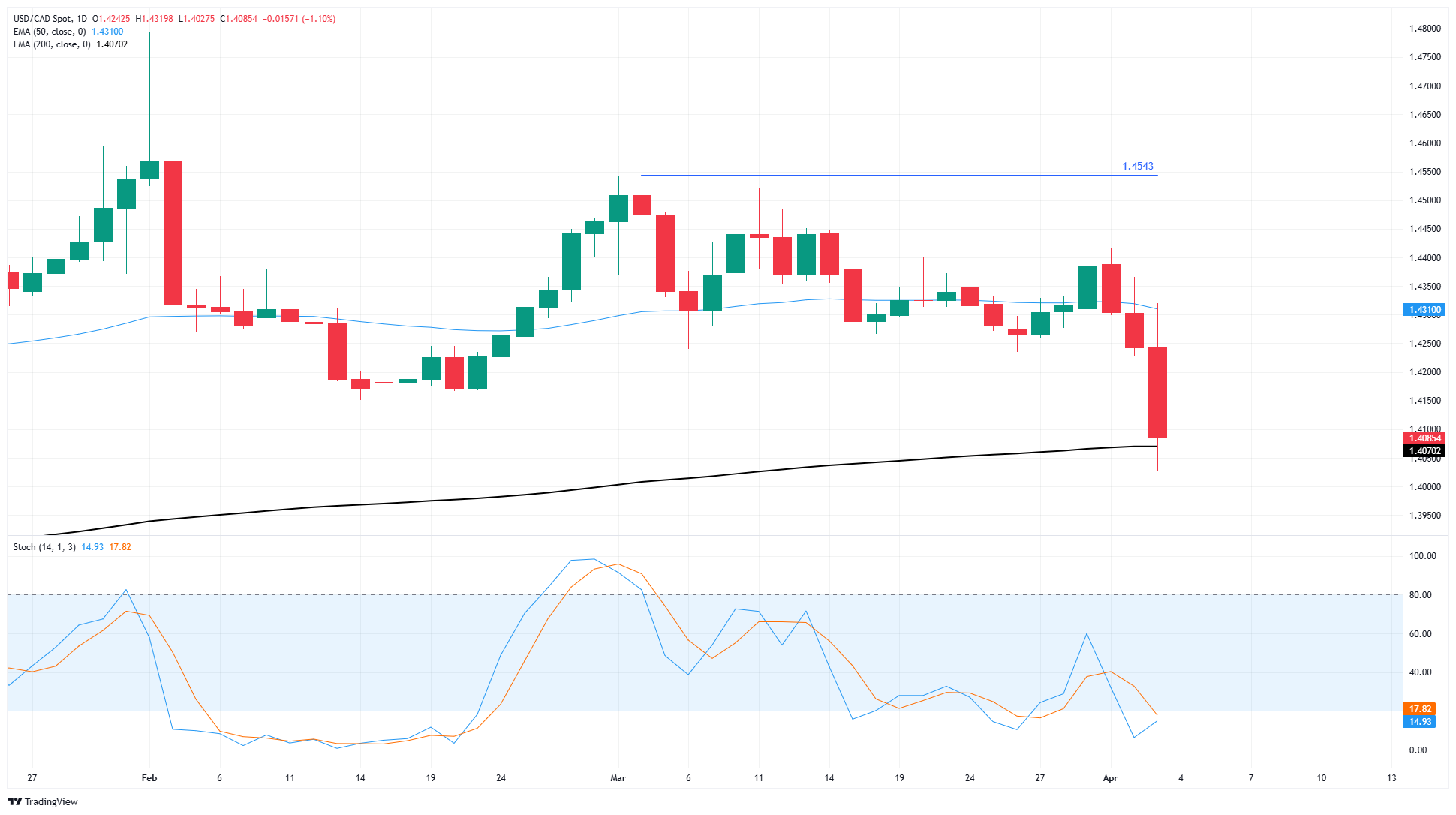April 03, 2025
- Canadian dollar clips 17-week height on Thursday.
- The Trump administration’s tariff has been spread in the market.
- Greenback is beating instead of behaving like a safe haven in the past.
The Canadian dollar (CAD) increased by 5.7% against the US dollar (US dollar) on Thursday, sending the US dollar/CAD below 17-week to the 1.5 handle for the first time after December. The Trump administration’s “Liberation Day” has rapidly weakened in the openings of tariffs, the fast has become stronger by the rapidly weak greenback.
In general, US dollars behave like a safe haven global, investors shake pilots in greenback holdings when things look unstable. However, these are not ordinary times. The US dollar is attacking the latest tariff of the Trump administration, which is a tiered but ready for a quick kick-in period.
Daily Digest Market Movers: Canadian Dollar Bore on Greenback Plummeting
- The Canadian dollar rose over the entire percentage on Thursday, hit many months in height, and launched Loi to close the higher against Greenback for the fifth week.
- The Trump Administration has been ready to implement 10% of a board’s tariffs on all products imported to the United States since April 5th. The “mutual tariff”, which was calculated as a US import proportion against export on every domestic basis, will begin on April 9.
- Both Canada and Mexico have been released from additional tariffs, until they are under USMCA (NEFTA) trade restrictions. Canada has returned with its own potential tariffs If US trade goes beyond its own USMCA boundary.
- Federal Reserve (FED) policy makers warn double duty on double duty that the tariffs can be worse for the rate of reduction.
- Fed Jefferson warned that the rate of Fed Fed did not change
- Fed’s Cook is expected to stall in inflation after the Cook Cookes
- US nonform Pay-Rolls (NFP) statistics are still arrears for Friday, already ready to welcome the outgoing markets.
Canadian dollar prosecution
Canadian dollar is ready for its fifth direct weekly profit against the US dollar. The USD/CAD has 3.55% pick-to-tru backslid from the last week of February, and by the end of January, the pair declined by 4.73% to the multi-decader peak.
Lunny’s latest Bull Run was pushed to USD/CAD to the 200-day exponent Moving Average (EMA) near 1.4070 and the CAD Bulls could be prepared to put the 1.4000 Major Handle down one more leg.
USD/CAD Daily Chart
Canadian dollars faks
The main reasons for running Canadian dollars (CAD) are the interest rate of interest rates determined by the Bank of Canada (BOC), oil prices, the largest export of Canada, its economy’s health, inflation and trade balance, which is compared to its imports in Canada’s export. Other factors include market feelings — investors are taking more risky assets (risk-on) or looking for safe-devens (risk-clicks)-because of the risk-on-on-positive. As its largest trading partner, the health of the US economy is also the main cause of the Canadian dollar.
The Bank of Canada (BOC) has a significant impact on the Canadian dollar that banks determine the rate of interest rates on each other ND. It affects the level of interest rates for everyone. BOC’s main goal is to maintain inflation at 1-3% by adjusting interest rates above or below. Relatively higher interest rates tend to be positive for CAD. The Bank of Canada may also use quantitative comfort and tightening to affect credit conditions with former cad-negative and subsequent cad-positive.
Oil prices are one of the main causes that affect the value of the Canadian dollar. Petroleum is the largest export of Canada, so the price of oil has to have an immediate impact on CAD quality. Generally, if the price of oil rises, the CADO goes up, as the overall demand for the currency increases. The opposite is if the price of oil falls. Higher oil prices also have greater potential for positive trade balance, which is also CAD supporters.
Although inflation was always considered the negative cause for the trading, as it reduces the value of money, the opposite actually happened with the relaxation of inter -bound capital controls in modern times. Higher inflation leads the central banks to increase interest rates, which attracts more capital flows worldwide investors to seek a profitable place to keep their money. It increases the demand for local currency, which is Canadian dollars in Canada.
Expressing macroeconomic data, assuming the health of the economy and can affect the Canadian dollar. Index such as GDP, Manufacturing and Services PMI, Employment and Consumers Sensation Survey can affect all CAD aspects. A strong economy is good for the Canadian dollar. It not only attracts more foreign investment but it can encourage the bank of Canada to increase interest rates, causing more powerful coins. If economic data is weak then there is a possibility of reading CAD.
